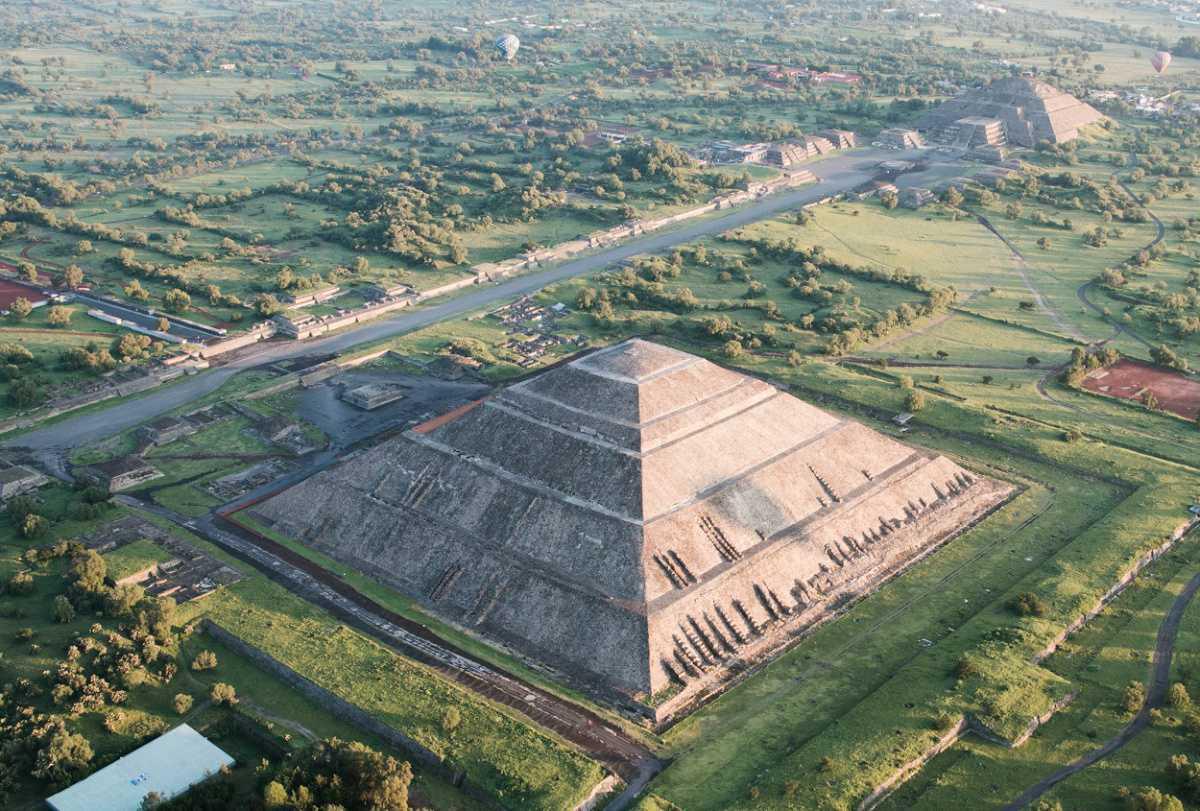A new genetic study has used the latest DNA sequencing techniques to reveal the entire mitochondrial genome sequences of the ancient Teōtīhuacāns.
Teōtīhuacān, loosely translated in Nahuatl as “birthplace of the gods”, is an ancient Mesoamerican city located in the Teotihuacan Valley of the Free and Sovereign State of Mexico, Mexico.
The development of Teōtīhuacān can be identified by four distinct consecutive phases, known as Teōtīhuacān I, II, III, and IV, with phase I starting around 200 – 100 BC during the Late Formative era.
During phase II from AD 100 to 350, the city population rapidly grew into a large metropolis, partly due to the economic pull and opportunities a thriving urban settlement presented, but also based on environmental factors suggested by the eruption of the Xitle volcano, forcing the migration from other settlements out of the central valley.
It was during this phase that many of the most notable monuments within Teōtīhuacān were constructed, including the Pyramid of the Sun (the third largest ancient pyramid after the Great Pyramid of Cholula and the Great Pyramid of Giza), the Pyramid of the Moon, the Avenue of the Dead, and the Ciudadela with the Temple of the Feathered Serpent Quetzalcoatl.
A new study, published in the Annals of Human Biology, has extracted mitochondrial DNA from burials recently excavated at Teōtīhuacān and employed target enrichment-coupled next-generation sequencing.
This has enabled for the entire mapping of the mitochondrial genome (mitogenome) despite the poor level of DNA preservation across the Teōtīhuacān zone due to soil and climate conditions.
The DNA from the burials are associated with haplogroups A2, B2, or D1, which are indicative of contemporary Native American lineages. Haplogroup A2 was the most prevalent, followed by B2 and D1, mirroring a pattern akin to what's observed in the Central Mesoamerican population.
With the mitochondrial DNA sequence information, these six individuals were categorized into more precise haplogroups: A2f2, A2ae, A2d1, A2d1, B2c1, and D1i.
Dr. Mizuno said, “The detailed genomic information obtained in this study can be combined with our previous data to determine how Teōtīhuacāns fit into these two types of population clusters. We previously proposed that two types of population clusters exist based on the analysis of haplogroup frequencies among the present Mesoamerican indigenous people: the Centro-Mesoamerican cluster and the Pan-American cluster. In this study, Teotihuacan was found to be similar to the Centro-Mesoamerican cluster.”
The study also used the same samples to conduct an isotope analysis in order to gain new data on the dietary patterns. This revealed that the individuals were highly dependent on C4 plants such as maize as their primary food source. The reliance on maize as a food staple is also consistent with the findings of previous archaeological studies.
Header Image Credit : Shutterstock


